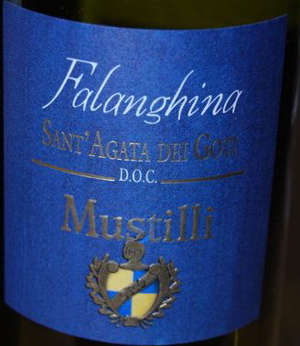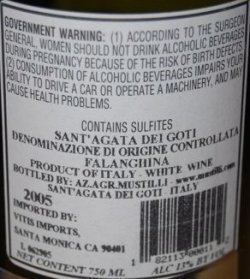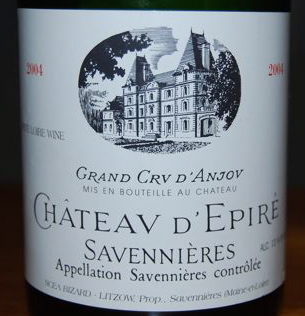How to Read Wine Labels
People complain that it is hard to learn how to read wine labels. In particular, foreign labels that are often in another language can scare off a wine novice no matter how gung-ho they are. If you aren't comfortable asking a salesperson, then you may have no idea what is in the bottle. That is why learning how to interpret a wine label is on our Wine 101 section. Getting past this hurdle is a big step into learning about wine and wine tasting.
In general, knowing something about wine regions and the styles of wine they produce will get you much of the way to deciphering how to read wine labels. More understanding will come as you start to learn about different vintages, producers, grape varietals and so on. But for the beginning of learning how to read wine labels, it helps to have an outline of the important things you are looking for on a label. We will also give some examples from different regions to demonstrate and give you practice in how to read wine labels.


How to Read Wine Labels - An Italian Example: This is a front and back label of an Italian wine. The front label says "Falanghina" which is the name of the grape varietal. Below that is "Sant'Agata Dei Goti" with D.O.C. below it. The same is written on the back label with Denominazione di Origine Controllata under it. This DOC tag indicates that this is the region, or appellation, that the wine comes from. So Sant'Agata Dei Goti is where the grapes were grown. At the bottom of the front it says "Mustilli" which is the name of the producer. This is repeated on the back where it says "Bottled By: Az. Agr. Mustilli". There is no vintage date on the front label, but 2005 is clearly marked on the back, as is the name of the importer, the volume of wine and the alcohol by volume (13% in this case).
What Should You Be Looking for on a Wine Label?
VintageThe vintage is the year the grapes were grown for a wine. Since wine characteristics and quality can vary from vintage to vintage, this is important to know. Most wines are vintage dated (there are a few exceptions such as non-vintage Champagnes and other sparkling wines and some Ports and Sherry). The vintage also tells you how old the wine is. It is generally written on the front label or on a separate neck label as a whole year number (like 1999, 2004, 1961, etc.). If you cannot find one, check on the back label as some are written there as well.
Region
When learning how to read wine labels, this can sometimes be tricky. In many wines the wine region that the grapes are from is clearly labeled either on the front or back label. For example, most wines from California will clearly say Sonoma, Napa, Paso Robles, or some other wine producing region. Many European wines are entirely named by where the wine comes from. So, for example, Chianti comes from Chianti in Italy. The bottles don't say what grape they are made from, just where they come from. This is true for many wines from Italy, France, Spain and other countries. If you aren't familiar with the region or sub-region listed, you may not realize what it is. For example, if you see a French wine with a large Nuits-St.-Georges printed across the label you might not realize that this is where it is from. Nuits-St.-Georges is the name of a village in Burgundy. This will get easier and easier as you learn more about different wine regions around the world.
A couple clues can help guide you to the appellation the wine came from. In France, the words "Appellation d'origine contrôlée" (AOC) are often found just below the name of the region the wine came from. Likewise, in Italian wines, when learning how to read wine labels, look for "Denominazione di origine controllata" (DOC).
Producer (Domaine, Chateau, etc.)
The name of the wine producer or winery is usually pretty obvious for most regions. In domestic and other New World wines (California, Australia, etc.) it is usually the most prominent and largest name on the label. For example, Mondavi is featured prominently on all the wines from Robert Mondavi Winery in Napa, regardless if the wine is a Cabernet, Merlot, Pinot or Chardonnay. In Europe, this can get more confusing as the name of the producer is often small. Most frequently they are printed in the lower left of the label and the biggest text is an indication of where the wine is from (see region above). One big exception is Bordeaux where the largest text is often the name of the Chateau (castle) or Domaine where the wine is from (which is really both the producer and the sub-region). For example, Chateau Petrus, Chateau Lynch-Bages, etc. These are the names of the property the grapes were grown on and where they were vinified. Most tend to start with "Chateau" or "Domaine".
Vineyard
Some wines, but not all, have a particular vineyard name listed. This means that all the grapes used to produce the wine were grown in a single vineyard, rather than blended from several sources. This is often done with plots of vines that are considered special and to have a special character which is best preserved alone. The name of the vineyard is usually featured prominently on the front label. For example, many Pinot Noirs from California are from single vineyards (such as Siduri PInot Noir Gary's Vineyard). In France and Italy it can be harder to tell which name on a label is the vineyard, but in places like Burgundy, Alsace, the Loire and some Rhône wines you will see wines named for a single vineyard. For example, in Burgundy, you may see a Vosne-Romanée (the village and AOC) with a name below it like "Les Suchots" (often in quotes). Les Suchots is the name of a single vineyard within the village of Vosne-Romanée. So it can get confusing, but the same general principles still apply. Wherever the wine comes from though, if it lists a single vineyard name, then by definition all the grapes had to have come from that one vineyard.
Wine Name
When learning how to read wine labels, you'll notice that some wines have a special proprietary name which has been given to it that is not related either to the producer or the vineyard it came from. These are made-up names that the owner/producer thought was appropriate. For example, Sine Qua Non winery has cool names for many of its wines, like "Just for the Love of It" or "Poker Face". Joseph Phelps vineyards has "insignia". In Tuscany in Italy there is "Solaia" and "Tignanello" and "Massetto" and such. These names do not help you identify anything about the wine in the bottle as they do not reflect either the region they came from, the vineyard, the producer or the types of grapes used in their making.
Grape Varietal
When learning how to read wine labels, the grape varietals used in the wine is often the first thing people look for. However, in many wines, particularly in many European regions, the grape varietal is not listed on the label. In California, Oregon, Alsace, Germany, Australia, South Africa and New Zealand, the general trend is to include the grape varietals on the label. This may either be featured prominently on the front label or is sometimes explained on the back label, sometimes even in a short paragraph of the wine's description by the producer. So for example, many California wines are clearly labeled "Cabernet Sauvignon" or "Merlot". In regions where it is less obvious from looking at the label, like Bordeaux, Burgundy, Champagne, etc., it is usually because there are only specific grapes allowed by law to be planted there, so the wines are named for the vineyard or village they came from rather than for the grapes. For example, while there are hundreds of different red grape vineyards in Burgundy, from Chambertin to Corton to Clos des Ducs, all of these are planted in 100% Pinot Noir by law. Therefore, to put both Chambertin and Pinot Noir on the label would be redundant. Also, for these wines, most afficianados agree that it is the place the grapes where grown that is most important to the quality and characteristics of the wine.

How to Read Wine Labels - A French Example: This is the front label of a wine from Savennières in the Loire Valley in France. You can tell it is from Savennières because it says "Appellation Savennières contrôlée". It is from the 2004 vintage (you can see 2004 printed on both sides at the upper part of the label. Off to the left, it says "White Loire Wine" which indicates that it is from the Loire Valley. Mis en Bouteille au Chateau means it was bottled at the chateau. The name of the domaine or chateau is "Château d'Epiré". You can also see the alcohol percentage off to the bottom right and at the very bottom is the name of the proprietor or owners of the chateau, Bizard-Litzow.
How to Read Wine Labels of Particular Countries: A Few More Tips
While it can be hard to generalize, particularly because the labels and conventions of different regions within a country can be very different, here are some general tips to help guide you in the right direction in learning how to read wine labels.
France
As mentioned above, look for the words "Appellation d'origine contrôlée" (AOC) or any similar phrase anywhere on the label. Sometimes it is in the format "Appellation [blank] Contrôlée" where the blank is the name of the appellation. This is will help you to find the region or "appellation" the wine was produced. While the vineyards and sub-regions can become confusing in places like Burgundy, learning how to read wine labels from these regions will come as you learn more about the region as a whole and the wines it produces.
Spain
Like France and Italy, Spain has an indicator which specifies which region a wine is from. "Denominación de Origen Calificada" (DOC) indicates the official region the grapes must have come from, so look for this term on either the front or back label of the wine.
Italy
As mentioned above, look for ""Denominazione di origine controllata" (DOC) which indicates which region or sub-region a wine came from.
Australia and California
Australian and Californian wines are generally pretty straightforward, clearly labeling both the region in which the wine was made as well as the grape varietals that went into it. In a few wines that have special names, oftentimes the back label will explain where the wine comes from and its composition.
We hope this helps you learn how to read wine labels! Again, practice and learn as much as you can about wine regions, grape varietals and specific producers to aid in understanding wine labels.
Done learning about How to Read Wine Labels?
Return to the Wine 101 page.











